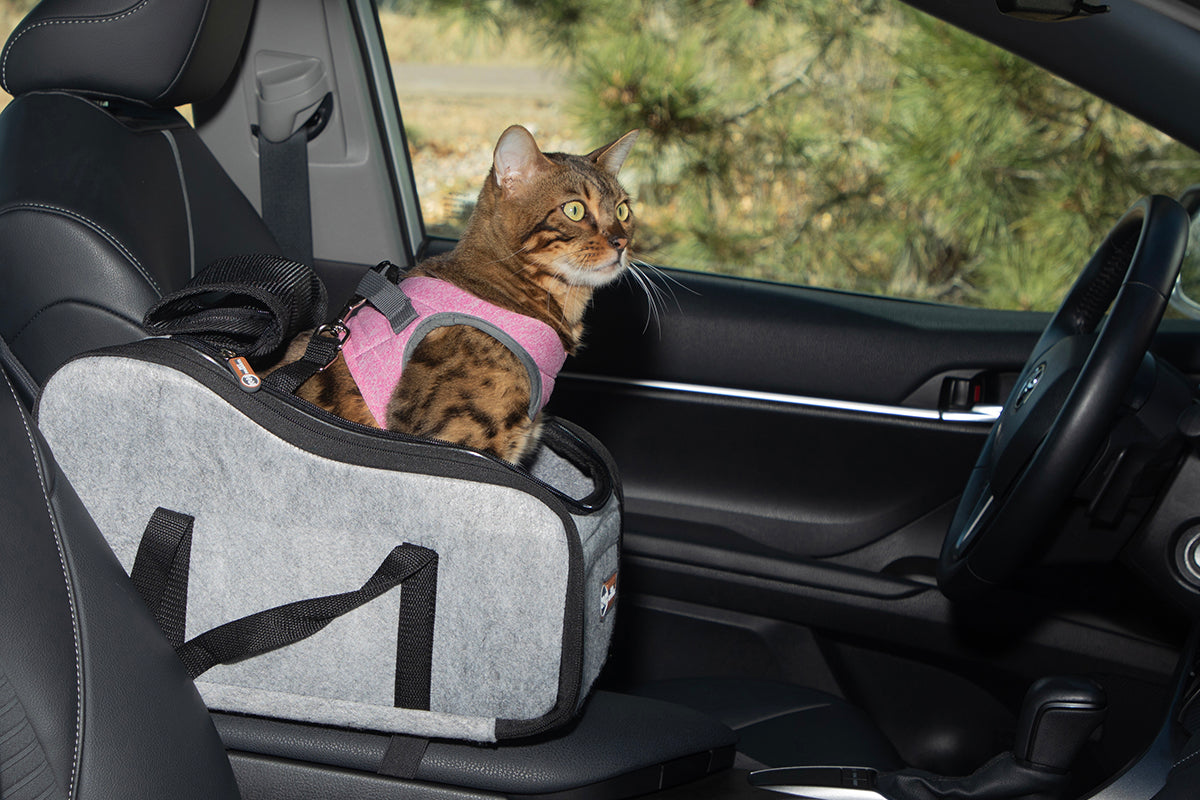
Why is my cat panting in the car?
Panting is almost synonymous with dogs, but have you ever seen a cat pant? Cats pant for the same reason as dogs — to release excess body heat. But you probably don't see it often because cats don't generally exercise with the same intensity as dogs do. One time you might see your cat panting is during a car ride.

Why is my cat panting in the car?
Why is your kitty panting in the car? He's not exercising, so what's with all the panting? It's likely your cat is nervous riding in the car, and the panting is a physical manifestation of that stress. But why is he nervous?
Cats are super smart animals, and super-smart animals sometimes learn associations we never intended to teach. For example, how many times a year does your cat actually travel in the car? Some cats might ride in the car frequently, but for many, the answer is once or twice a year. And where do you take your cat on these trips? To the veterinarian. Since many pets don't love visiting the doctor, you may unintentionally train your cat to dislike car rides. Then car rides become stressful for your cat, and panting may occur.
Even without a trip to the veterinarian, your cat may be upset about the car ride simply because it's an unusual event. Additionally, if your cat feels too warm in the vehicle, it can also exacerbate cat motion sickness or general stress over the car ride, and he may pant from that.
How can you help your cat?
You can help minimize these issues by keeping your cat cool during the trip. Your vehicle's AC can help keep the interior comfortable (maybe set it a bit cooler than you might prefer for yourself). You can supply your cat with a K&H Coolin' Pet Pad to lie on, as it wicks heat out of your cat.
Use a travel carrier whenever your cat rides in your car to help him feel safe and understand what's happening. You can teach your cat the car is an OK place to be — even a good place! He learns, “This is safe. I know it's a normal event when I'm in this carrier and will only last a short time."
Take a few brief practice trips with your cat, maybe around the block, then immediately bring him home and give him a treat. You're reinforcing two ideas here: not all car rides end at the veterinarian's office, and riding in the car results in a happy snack. You could also try a cat-calming pheromone product in the carrier, like the Comfort Zone Spray & Scratch Control Spray that mimics your cat's natural pheromones to help create a calming environment.
Some carriers, like the K&H Mod Capsule Pet Carrier, can also be used inside the house as a cat play cave. This helps ensure your cat recognizes the carrier as a good and familiar place to hang out. It can also help your cat feel more at ease in the car, which may reduce stress-induced panting.
If you suspect motion sickness is bothering your cat in the car, ask your veterinarian about preventive medications that can be given before a trip.
A Pet Carrier Is Better for You Both
Restricting your cat inside a pet carrier makes the driving experience safer as you won't be distracted by the cat. Loose pets in the vehicle make distracting noises and motions, try to get your attention, or attempt to climb into your lap while you're driving. And carriers can be safer for your cat, as some, like the K&H Portable Pet Console Booster Car Seat or the K&H Bucket Booster Pet Seat, either strap onto the console or buckle safely into the seat. The height boost also means your cat can see his environment better.
Cat Panting Is Common, but Pay Attention to Your Cat's Behavior
Cat panting in the car is common, but it often means the cat is bothered in some way. Always pay attention to your cat's behavior and learn what's normal for him and what's not. Recognizing these shifts in behavior can help you make adjustments so he's more comfortable and less stressed when riding in the car. A combination of training and the right cat carrier can go a long way toward a happy day and a happy ride in the car for your cat.


